
Augustine of Canterbury was a Christian monk who became the first archbishop of Canterbury in the year 597. He is considered the "Apostle to the English”.

Vesta is the virgin goddess of the hearth, home, and family in Roman religion. She was rarely depicted in human form, and was more often represented by the fire of her temple in the Forum Romanum. Entry to her temple was permitted only to her priestesses, the Vestal Virgins. Their virginity was deemed essential to Rome's survival; if found guilty of inchastity, they were buried or entombed alive. As Vesta was considered a guardian of the Roman people, her festival, the Vestalia, was regarded as one of the most important Roman holidays. During the Vestalia privileged matrons walked barefoot through the city to the temple, where they presented food-offerings. Such was Vesta's importance to Roman religion that following the rise of Christianity, hers was one of the last non-Christian cults still active, until it was forcibly disbanded by the Christian emperor Theodosius I in AD 391.

The Palatine Hill, which relative to the seven hills of Rome is the centremost, is one of the most ancient parts of the city; it has been called "the first nucleus of the Roman Empire". The site is now mainly a large open-air museum whilst the Palatine Museum houses many finds from the excavations here and from other ancient Italian sites.
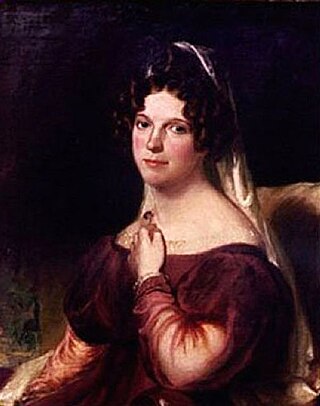
Felicia Dorothea Hemans was an English poet. Regarded as the leading female poet of her day, Hemans was immensely popular during her lifetime in both England and the United States, and was second only to Lord Byron in terms of sales.

The Catacombs of Rome are ancient catacombs, underground burial places in and around Rome, of which there are at least forty, some rediscovered only in recent decades.

The Chi Rho is one of the earliest forms of the Christogram, formed by superimposing the first two (capital) letters—chi and rho (ΧΡ)—of the Greek ΧΡΙΣΤΟΣ in such a way that the vertical stroke of the rho intersects the center of the chi.
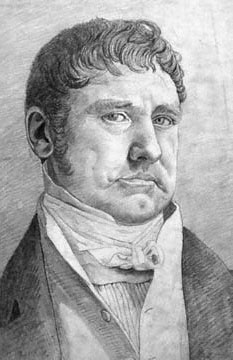
Sir William Gell FRS, pron. "Jell", was a British classical archaeologist and illustrator. He published topographical illustrations of Troy and the surrounding area in 1804. He also published illustrations showing the results of archaeological digs at Pompeii. His best-known work is Pompeiana; the Topography, Edifices and Ornaments of Pompeii, published between 1817 and 1832.
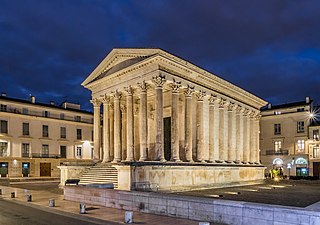
Ancient Roman temples were among the most important buildings in Roman culture, and some of the richest buildings in Roman architecture, though only a few survive in any sort of complete state. Today they remain "the most obvious symbol of Roman architecture". Their construction and maintenance was a major part of ancient Roman religion, and all towns of any importance had at least one main temple, as well as smaller shrines. The main room (cella) housed the cult image of the deity to whom the temple was dedicated, and often a table for supplementary offerings or libations and a small altar for incense. Behind the cella was a room, or rooms, used by temple attendants for storage of equipment and offerings. The ordinary worshiper rarely entered the cella, and most public ceremonies were performed outside of the cella where the sacrificial altar was located, on the portico, with a crowd gathered in the temple precinct.

The Temple of Vesta, or the aedes, is an ancient edifice in Rome, Italy. It is located in the Roman Forum near the Regia and the House of the Vestal Virgins. The Temple of Vesta housed Vesta's holy fire, which was a symbol of Rome's safety and prosperity. The temple has a circular footprint, making it a tholos.

Anglo-Saxon England or Early Medieval England, existing from the 5th to the 11th centuries from soon after the end of Roman Britain until the Norman Conquest in 1066, consisted of various Anglo-Saxon kingdoms until 927, when it was united as the Kingdom of England by King Æthelstan. It became part of the short-lived North Sea Empire of Cnut, a personal union between England, Denmark and Norway in the 11th century.
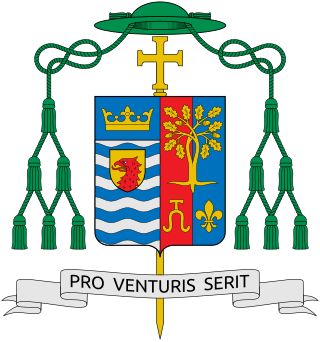
Glen John Provost is an American prelate of the Roman Catholic Church who has served as bishop of the Diocese of Lake Charles in Louisiana since 2007.

Fiesole Cathedral, officially the Cathedral of Saint Romulus of Fiesole, is a Roman Catholic cathedral in Fiesole, Tuscany, central Italy. It is the seat of the Bishop of Fiesole and is dedicated to Saint Romulus.

In ancient Roman religion and mythology, Mars is the god of war and also an agricultural guardian, a combination characteristic of early Rome. He is the son of Jupiter and Juno, and was pre-eminent among the Roman army's military gods. Most of his festivals were held in March, the month named for him, and in October, the months which traditionally began and ended the season for both military campaigning and farming.

In classical mythology, Cupid is the god of desire, erotic love, attraction and affection. He is often portrayed as the son of the love goddess Venus and the god of war Mars. He is also known as Amor. His Greek counterpart is Eros. Although Eros is generally portrayed as a slender winged youth in Classical Greek art, during the Hellenistic period, he was increasingly portrayed as a chubby boy. During this time, his iconography acquired the bow and arrow that represent his source of power: a person, or even a deity, who is shot by Cupid's arrow is filled with uncontrollable desire. In myths, Cupid is a minor character who serves mostly to set the plot in motion. He is a main character only in the tale of Cupid and Psyche, when wounded by his own weapons, he experiences the ordeal of love. Although other extended stories are not told about him, his tradition is rich in poetic themes and visual scenarios, such as "Love conquers all" and the retaliatory punishment or torture of Cupid.

Arthur John Strutt (1819–1888), was a British painter, engraver, writer, traveller and archaeologist.
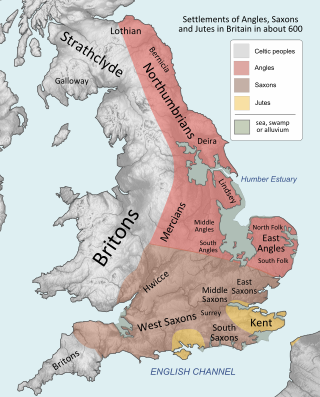
The Gregorian mission or Augustinian mission was a Christian mission sent by Pope Gregory the Great in 596 to convert Britain's Anglo-Saxons. The mission was headed by Augustine of Canterbury. By the time of the death of the last missionary in 653, the mission had established Christianity among the southern Anglo-Saxons. Along with the Irish and Frankish missions it converted Anglo-Saxons in other parts of Britain as well and influenced the Hiberno-Scottish missions to continental Europe.
The Pontifical Academy of Archaeology is an academic honorary society established in Rome by the Catholic Church for the advancement of Christian archaeological study. It is one of the ten such Pontifical Academies established by the Holy See.
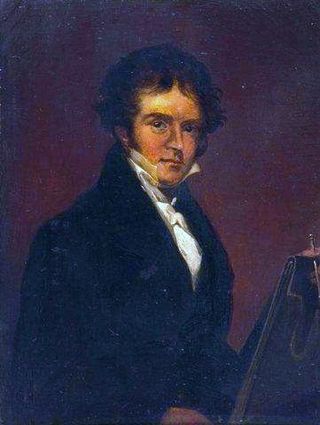
William Linton (1791–1876) was a British landscape artist.

Eugénie Sellers Strong was a British archaeologist and art historian. She was assistant director of the British School at Rome from 1909 to 1925. After studying at Girton College, Cambridge, in 1890 she became the first female student admitted to the British School at Athens; she continued art historical studies in Germany under Adolf Furtwängler. In 1897 she married art historian Sandford Arthur Strong. She contributed to the catalogue of the 1903 Burlington Fine Arts Club "Greek Art" Exhibition, and wrote several books on classical art and sculpture.


















